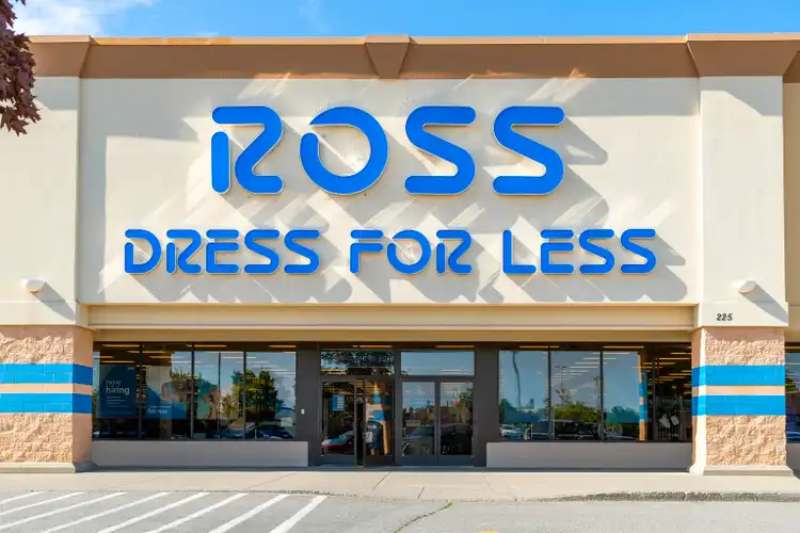
Ross Stores has posted stronger-than-expected Q1 2025 earnings results. Yet, despite this solid start to the year, its stock is under pressure due to renewed fears about U.S. tariffs and rising import costs. Let’s take a closer look at Ross Stores' financial performance, stock update, and expansion plans.
In its Q1 2025 earnings report, Ross Stores reported a net income that beat analyst estimates. The retailer posted earnings per share of $1.47 and revenue of $4.98 billion, outperforming Wall Street’s predictions. Comparable store sales rose by 3%, signaling healthy demand for off-price retail options.
These results reflect the company’s success in appealing to cost-conscious shoppers, especially during a time of inflation and consumer cutbacks.
Ross Stores' strong Q1 2025 performance is driven by its core discount retail model. In a tight economy, more shoppers are choosing budget-friendly retailers. Ross offers name-brand merchandise at lower prices, attracting customers who are trading down from higher-end stores.
CEO Barbara Rentler highlighted that consumer demand remains steady and that the company’s operational discipline and supply chain control have played a key role in maintaining profitability.
While many retail chains are slowing growth, Ross Stores is expanding aggressively in 2025. In March alone, the company opened 19 new stores—16 Ross Dress for Less locations and 3 dd’s DISCOUNTS stores across 14 U.S. states.
By the end of 2025, Ross plans to open a total of 90 new stores. This includes 80 Ross and 10 dd’s DISCOUNTS locations, growing its national presence to over 2,200 stores. The continued investment in physical retail shows Ross’s confidence in its business model, even in a volatile market.
Despite strong earnings, Ross Stores made a surprising move by withdrawing its full-year 2025 financial guidance. The company cited concerns about new U.S. tariffs, especially those targeting goods imported from China. Since Ross imports more than half of its merchandise from overseas, any increase in tariffs can lead to higher product costs.
This development alarmed investors, raising fears of shrinking margins and higher retail prices that could dampen consumer spending.
Immediately after releasing its Q1 results and pulling back its guidance, Ross Stores stock dropped nearly 10%. The market reaction was swift, as investors interpreted the withdrawn forecast as a sign of uncertainty.
While the core business remains strong, the unpredictability of U.S. trade policies and global inflation is weighing heavily on investor sentiment. The key concern is whether Ross will be able to maintain its margins while navigating a tougher cost environment.
With Ross Stores stock declining after the Q1 2025 report, analysts are split on what’s next. Some experts view the dip as a temporary setback and a possible buying opportunity for long-term investors. Others remain cautious, citing the risks posed by tariffs, rising shipping costs, and potential consumer weakness in the second half of the year.
However, Ross’s strong balance sheet, cash flow, and consistent execution give many reason to stay optimistic. If the company can manage its supply chain exposure and continue attracting value-driven shoppers, its long-term outlook remains promising.
To counter the tariff risks, Ross is taking steps to diversify its sourcing and strengthen inventory control. The retailer is exploring alternative markets beyond China and streamlining its supply chain to improve efficiency.
Its 2025 strategy also focuses on improving in-store experience, enhancing digital tools, and expanding real estate in underserved markets. These moves are designed to maintain Ross’s competitive edge while preparing for future uncertainty in global trade.
Ross Dress for Less continues to stand out in the discount retail space. As competitors like TJX and Burlington also push into value retail, Ross’s rapid store expansion gives it an advantage in market coverage and brand presence.
In 2025, Ross is positioning itself not just as a bargain destination, but as a key player in the broader shift toward off-price retail. With consumer behavior leaning toward savings and essentials, Ross Dress for Less is poised to benefit.
Ross Stores delivered impressive Q1 2025 earnings, beating expectations and showing strong retail growth. However, concerns about U.S. tariffs and trade policy uncertainty have cast a shadow over its stock performance.
For investors, the message is clear: Ross remains a solid business with room to grow, but external challenges like inflation and import costs must be watched closely in the months ahead.